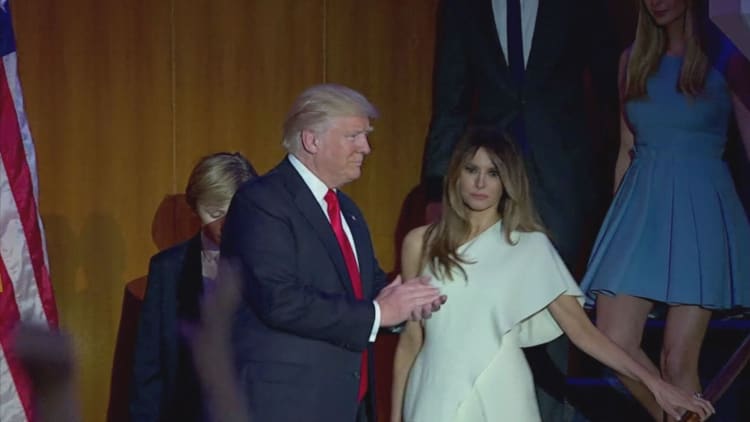
Donald Trump made energy a pillar of his economic policy, and now the president-elect is poised to unwind President Barack Obama's key climate change initiatives and potentially torpedo an international global warming initiative years in the making.
The change could happen quickly, too, in no small part because of the way the Obama administration advanced much of its own agenda.
Realizing early on that there was little he could accomplish through legislation while Republicans held both houses of Congress, Obama pieced together a large number of initiatives to reduce the country's greenhouse gas emissions and fossil fuel consumption, largely through regulation.
That means Trump can order regulators to stop enforcing the rules by using the same executive authority Obama exercised to set them in motion.
Here are the initiatives Trump has either said he will cancel or is likely to target in light of his promise to increase U.S. oil, gas, and coal production:
Paris Agreement on climate
The Paris Agreement moved forward an effort by nearly 200 countries to reduce the impact of climate change by preventing global temperatures from rising above a certain level. Each country devises its own plans to meet its obligation to achieve that shared goal.
When the deal was reached last November, the United States pledged to reduce its greenhouse gas emissions by 26 to 28 percent from its 2005 levels, by the year 2025.
Trump has said he will "cancel" the agreement. It would be remarkably easy to do just that. All he needs to do is stop enforcing Obama's climate initiatives.
In setting its goal, the United States factored in emissions reductions achieved through Obama-era rules. It would be virtually impossible to deliver on the Paris Agreement pledge without them.
The United States is the world's second largest energy consumer, so its withdrawal from the agreement would have significant implications for meeting the global goal.
Clean Power Plan
Trump has pledged to scrap the Clean Power Plan, which seeks to reduce carbon pollution from power plants, primarily coal-fired units. The plan leaves it up to states to decide exactly how they will cut emissions from plants by 32 percent from 2005 levels by 2030.
Power plants are the single largest source of carbon pollution in the United States, according to the Environmental Protection Agency, so abandoning the plan would mark a significant setback in reducing greenhouse gas emissions.
In February, the Supreme Court temporarily blocked the initiative from moving forward until lower court challenges from more than two dozen states and a number of industry groups are resolved.
The EPA claimed its authority to enforce the new rules was enshrined in the Clean Air Act, which gives the agency broad scope to create regulations to protect the public health by reducing airborne pollutants.
Mercury and Air Toxics Standards
The Obama administration has already targeted some power plant pollutants with the Mercury and Air Toxics Standards. The regulation put limits on mercury, arsenic and other toxic air pollutants and is particularly aimed at coal-fired plants.
Trump has not said much about MATS, but he has vowed to revive U.S. coal production by reducing regulatory burdens. MATS has contributed to the expedited retirement of some coal plants, according to the U.S. Energy Information Administration. The EIA noted that 30 percent of the coal plant retirements for 2015 occurred when the regulations took effect in April.
Retirements tend to be among older and and lower capacity coal plants. The average coal unit retired in 2015 was 54 years old and produced 133 megawatts of net summer capacity. Coal units still operating average 38 years and produced 278 megawatts.
Trump would also end a moratorium on issuing new leases to mine for coal on federal land, which the Obama administration announced about two years ago.
EPA methane emissions
This year, the EPA released rules aimed at cutting methane emissions from the oil and gas industry. The rules are meant to capture "fugitive" methane, a highly potent greenhouse gas that leaks from equipment or enters the atmosphere during hydraulic fracturing, the process of releasing oil and gas from shale rock by pummeling it with water, minerals and chemicals.
Trump has said he will strip energy regulations that get in the way of producing more oil and gas from U.S. fields.
The methane rules have already been challenged in court by a number of oil-producing states. Critics say the regulation is unnecessary, because many drillers are already tackling the problem themselves.
Scientists recently concluded that the oil and gas industry produced far more methane emissions than previously thought, but leaks from the sector did not drive the increase in overall emissions since 2007. That is because the industry has reduced leaks. But at the same time, efficiency gains were offset by the increased production of oil and gas.


